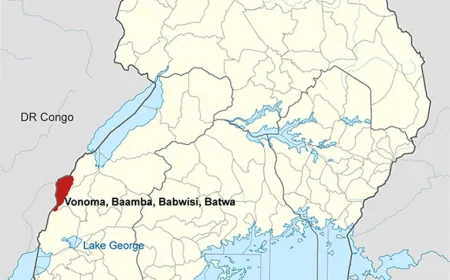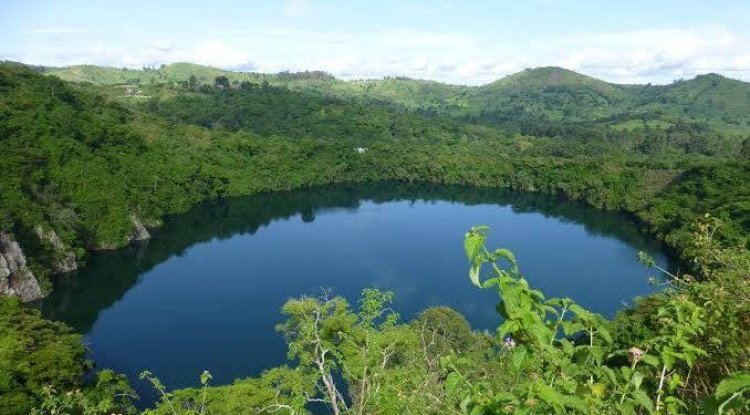About Kampala city
Kampala is the capital city of Uganda. It is in the South Central part of the country close to the shores of Lake Victoria. The City is divided into five boroughs that oversee local planning: Kampala Central Division, Kawempe Division, Makindye Division, Nakawa Division and Lubaga Division.
Kampala is Uganda's national and commercial capital, bordering Lake Victoria, Africa's largest lake. Hills covered with red-tile villas and trees surround an urban center of contemporary skyscrapers. In this downtown area, the Uganda Museum explores the country's tribal heritage through an extensive collection of artifacts. On nearby Mengo Hill is Lubiri Palace, the former seat of the Buganda Kingdom.
Kampala is an extremely safe city to explore, and visitors should be sure to experience the striking contrasts in the city centre on the slopes of Nakasero hill. Above Kampala Road, the main thoroughfare, leafy avenues, are lined by restored colonial buildings—many occupied by quality restaurants and hotels—and brand new office buildings, while downhill, congested streets descend to color-full markets, chaotic bus parks, and a permanent grid lock of vehicles, boda bodas (motorcycles), and pedestrians.
Kampala is divided into five political divisions, namely:
(a) Kampala Central Division
(b) Kawempe Division
(c) Lubaga Division
(d) Makindye Division
(e) Nakawa Division
How did Kampala get its name?
Kampala originally referred to only the present-day Old Kampala hill, on whose summit Fort Lugard was located, and the initial headquarters of the British colonial authorities in the soon-to-be Uganda Protectorate.
Before the British construction of Fort Lugard, the hill was a hunting reserve of the Kabaka (King) of Buganda and had several species of antelope, especially the impala. As a result, when the British colonial officials were allocated this hill by the then Kabaka (King) of Buganda, they referred to it as "The Hill of the Impala.".
The Baganda, in whose territory this British settlement was located, then translated "Hill of the Impala" as Akasozi ke'Empala. This was then shortened to K'empala, and finally Kampala. Kasozi means "hill," ke means "of," and empala is the plural of "impala.". Hence the name "Kampala" came to refer to this initial British colonial settlement that would later spread out from the occupied Old Kampala hill near the pre-existing Kibuga (capital) of the Buganda Kingdom.
The History of Kampala
This area of numerous hills and swamps that later became known as Kampala was part of the core of the highly centralized Buganda Kingdom. It was also the site of the shifting Kibuga (capital) of the different Bassekabaka (kings) of the Buganda Kingdom, with each Kabaka (king) upon coronation, or subsequently during their reign, setting up their Kibuga (capital) on a new and/or different hill as they wished or desired.
Kampala is a hilly place with its valleys filled with sluggish rivers and swamps. The highest point in the city proper is the summit of Kololo Hill at 1,311 meters (4,301 feet), located in the center of the city, and the lowest point is at the shores of Lake Victoria south of the city center at an altitude of 1,135 meters (3,724 feet).
The original hills of Kampala
Kampala was originally built on seven hills, but it has expanded to cover more than the original seven hills.
The original seven hills are:
- Old Kampala Hill, on which Fort Lugard was located, was the first seat of the British colonial authorities in colonial Uganda.
- The second is Mengo Hill, which was the then-Kibuga (capital) of the Buganda kingdom at the start of British colonial rule.
- The third is Kibuli Hill, which is home to the Kibuli Mosque.
- The fourth is Namirembe Hill, which was home to the Anglican (Wangeleza) faction of the Buganda religious wars of 1888–1892 and the site of Namirembe Anglican Cathedral.
- The fifth is Lubaga Hill, which was home to the White Fathers Catholic (Wafaransa) faction of the above-mentioned Buganda religious wars and also the site of the Rubaga Catholic Cathedral.
- The sixth is Nsambya Hill, site of the former Cathedral of St Peter's Nsambya and allocated to the British Catholic Mill Hill Mission during the signing of the Uganda Agreement (1900).
- The seventh is Nakasero Hill on whose summit was Fort Nakasero, a British military installation built after relocating from Fort Lugard in Old Kampala. The hill was also the site of the European Hospital (the current government analytical laboratory opposite the Ministry of Public Service headquarters).
The weather in Kampala
Kampala has a tropical rainforest climate (Af) under the Köppen-Geiger climate classification system.
A facet of Kampala's weather is that it features two annual wetter seasons. While the city does not have a true dry season month, it experiences heavier precipitation from August to December and from February to June. However, it is between February and June that Kampala sees substantially heavier rainfall per month, with April typically seeing the heaviest amount of precipitation at an average of around 169 millimeters (6.7 in) of rain.
Popular attractions in Kampala
- Visit the Baha'i temple
- Gaddafi Mosque
- The Uganda Museum
- National Theatre
- Gaddafi National Mosque (in Old Kampala)
- Kabaka’s Palace
- The Buganda Parliament (Bulange Mengo)
- Kasubi Royal Tombs
- Uganda martyrs Shrine Namugongo
- Ndere Centre
- Namirembe Cathedral
- Buganda Craft village
- Nakasero market
- Kabakas Lake
Accommodation in Kampala
Kampala offers a wide choice of accommodation, including several five-star hotels; this was greatly expanded prior to the Kampala Commonwealth Summit in 2007; decent mid-range hotels; and popular backpacker hostels.
Modes of transport within Kampala.
Boda boda. Boda-bodas (local motorbike transport) are a popular mode of transport that gives access to many areas within and outside the city. Standard fees for these range from US$1,000 to $2,000 or more. Boda-bodas are useful for passing through rush-hour traffic, although many are poorly maintained and dangerous.
Taxis. In Uganda, the term "taxi" refers to a 15-seater minibus used as public transport. Their fares are cheaper compared to boda bodas, especially for longer routes within the city.
These are the most common means of transport around Kampala; however, you may opt for hiring a ride with a driver or use one of the popular apps like Uber, SafeBoda, etc. You can also take a ride on a train.
What's Your Reaction?
 Like
0
Like
0
 Dislike
0
Dislike
0
 Love
0
Love
0
 Funny
0
Funny
0
 Angry
0
Angry
0
 Sad
0
Sad
0
 Wow
0
Wow
0












































































